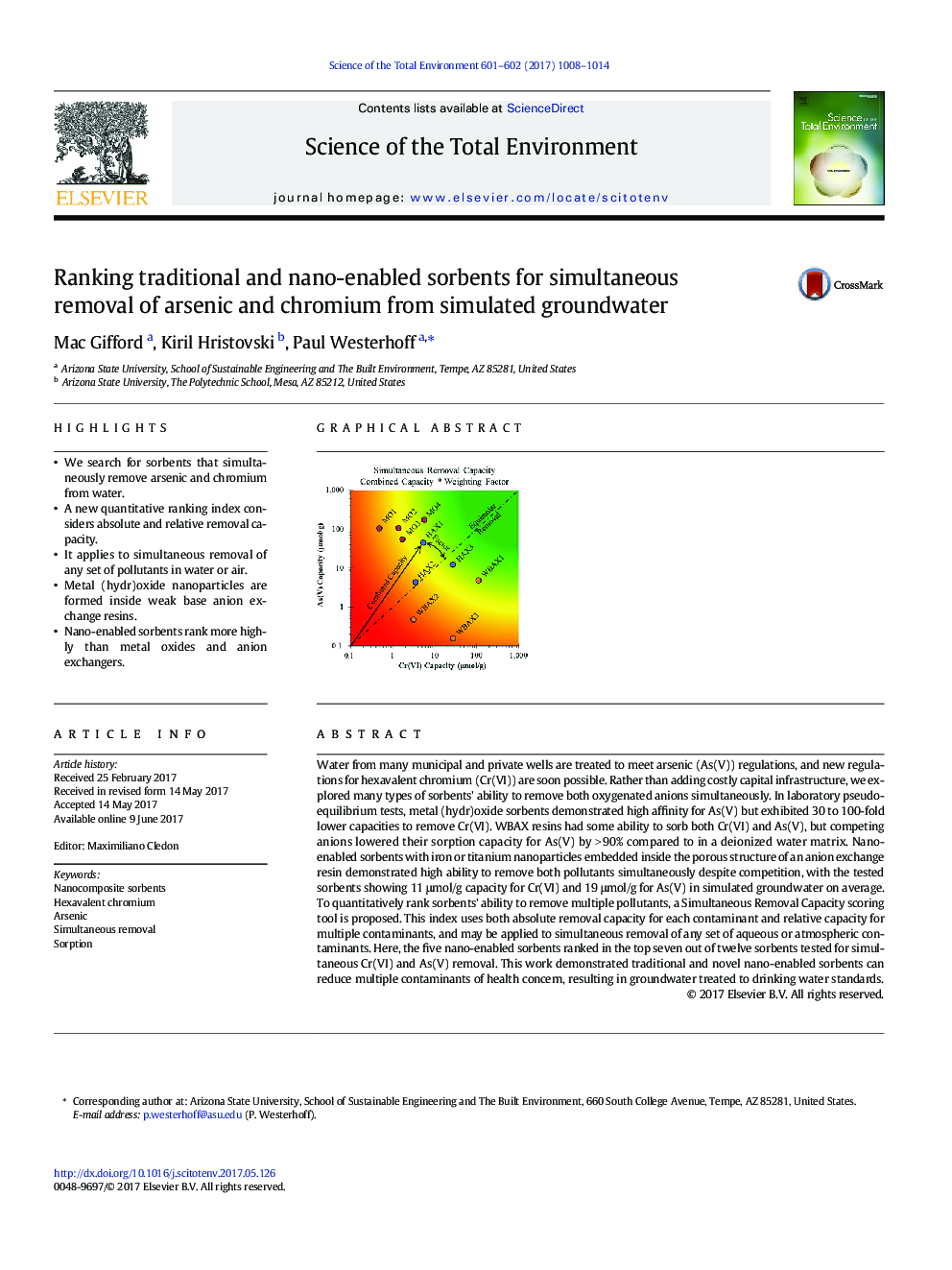| کد مقاله | کد نشریه | سال انتشار | مقاله انگلیسی | نسخه تمام متن |
|---|---|---|---|---|
| 5750456 | 1619697 | 2017 | 7 صفحه PDF | دانلود رایگان |
- We search for sorbents that simultaneously remove arsenic and chromium from water.
- A new quantitative ranking index considers absolute and relative removal capacity.
- It applies to simultaneous removal of any set of pollutants in water or air.
- Metal (hydr)oxide nanoparticles are formed inside weak base anion exchange resins.
- Nano-enabled sorbents rank more highly than metal oxides and anion exchangers.
Water from many municipal and private wells are treated to meet arsenic (As(V)) regulations, and new regulations for hexavalent chromium (Cr(VI)) are soon possible. Rather than adding costly capital infrastructure, we explored many types of sorbents' ability to remove both oxygenated anions simultaneously. In laboratory pseudo-equilibrium tests, metal (hydr)oxide sorbents demonstrated high affinity for As(V) but exhibited 30 to 100-fold lower capacities to remove Cr(VI). WBAX resins had some ability to sorb both Cr(VI) and As(V), but competing anions lowered their sorption capacity for As(V) by > 90% compared to in a deionized water matrix. Nano-enabled sorbents with iron or titanium nanoparticles embedded inside the porous structure of an anion exchange resin demonstrated high ability to remove both pollutants simultaneously despite competition, with the tested sorbents showing 11 μmol/g capacity for Cr(VI) and 19 μmol/g for As(V) in simulated groundwater on average. To quantitatively rank sorbents' ability to remove multiple pollutants, a Simultaneous Removal Capacity scoring tool is proposed. This index uses both absolute removal capacity for each contaminant and relative capacity for multiple contaminants, and may be applied to simultaneous removal of any set of aqueous or atmospheric contaminants. Here, the five nano-enabled sorbents ranked in the top seven out of twelve sorbents tested for simultaneous Cr(VI) and As(V) removal. This work demonstrated traditional and novel nano-enabled sorbents can reduce multiple contaminants of health concern, resulting in groundwater treated to drinking water standards.
85
Journal: Science of The Total Environment - Volumes 601â602, 1 December 2017, Pages 1008-1014
